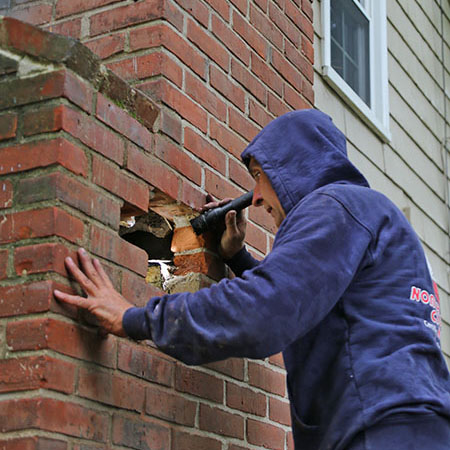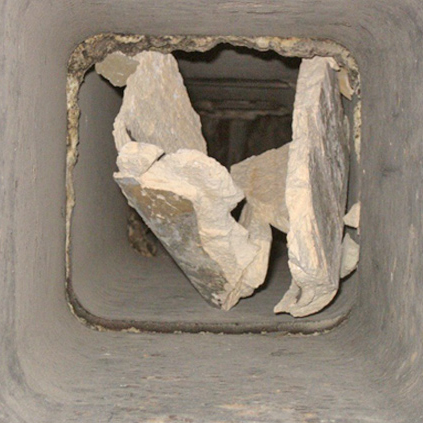4 Chimney Problems That Need Immediate Repair
 Even the most well-built chimneys will need maintenance and repairs from time to time. Winter weather conditions like rain, hail, snow and ice can accelerate the normal wear and tear. And with cold and ice outside, and fire and high temperatures inside the flue, chimney repairs are all but inevitable. Fortunately, most chimney problems can be detected with regular inspections. But there are some problems that will need immediate repair.
Even the most well-built chimneys will need maintenance and repairs from time to time. Winter weather conditions like rain, hail, snow and ice can accelerate the normal wear and tear. And with cold and ice outside, and fire and high temperatures inside the flue, chimney repairs are all but inevitable. Fortunately, most chimney problems can be detected with regular inspections. But there are some problems that will need immediate repair.
Water Leaks
Moisture inside the chimney is a problem that requires immediate repair. The most common sources of a leak are a cracked cap or crown, spalling bricks, and damaged flashing. Over time, water will soften the masonry that can affect the structural integrity of the chimney and your home. It can also cause cracks inside the flue that may also damage the liner. This can eventually become a safety hazard that not only puts your home at an increased risk of a fire, but it can also allow dangerous carbon monoxide fumes to leak into your living space. If you notice any water or condensation in the chimney or fireplace, give us a call to schedule an immediate inspection. Our chimney technician will visually inspect the chimney to pinpoint and repair the source of the leak.
Creosote Accumulation
Creosote is that sticky, tarry substance that clings to the chimney walls, flue liner and surrounding components. It is naturally produced from the combustion of igniting the fireplace. In chimneys that are not regularly cleaned, the creosote will continue to accumulate. It is this accumulation that is the leading cause of a chimney fire. In fact, many homeowners may be unaware of fire damage until they peek inside the fireplace or have an inspection. Fire safety experts agree that an annual chimney cleaning is the best way to minimize the risk of a fire. Homeowners that use their fireplace more frequently may need an additional cleaning.
Cracked or Missing Bricks
Spalled or missing bricks are the result of a combination of deterioration in the outer layer of the brick or masonry and the freeze-thaw cycle. Most damaged bricks or stones begin as tiny cracks in the surface that are hardly noticeable. As water and ice continues to penetrate, the masonry begins to crumble, and you may notice portions or entire bricks missing from the chimney. The remaining bricks will continue to soak up any moisture or condensation that develops further weakening the structure. In many cases, tuckpointing can repair the damage. But if the damage is severe it may require a chimney rebuild.
Damaged Flue Liner
 When you have a beautiful roaring fire in the fireplace, inside the chimney is like a hot oven with temperatures that can rise above 1,100 F. The flue liner is designed to absorb much of the heat and insulate the chimney and your home from deadly carbon monoxide. But these conditions can also result in cracks in clay or cement liners. Also, the chemicals in oil and gas can also cause excessive wear and tear. You may notice that your fireplace is not heating as efficiently, or your carbon monoxide detector may signal an alert. But most flue liner damages are very difficult to detect without a professional chimney inspection. And a damaged flue liner means your fireplace is unsafe for use until repaired.
When you have a beautiful roaring fire in the fireplace, inside the chimney is like a hot oven with temperatures that can rise above 1,100 F. The flue liner is designed to absorb much of the heat and insulate the chimney and your home from deadly carbon monoxide. But these conditions can also result in cracks in clay or cement liners. Also, the chemicals in oil and gas can also cause excessive wear and tear. You may notice that your fireplace is not heating as efficiently, or your carbon monoxide detector may signal an alert. But most flue liner damages are very difficult to detect without a professional chimney inspection. And a damaged flue liner means your fireplace is unsafe for use until repaired.
Northeastern Chimney is your one-stop chimney inspection and repair service. Schedule an inspection or request a free estimate for any type of chimney repair.


